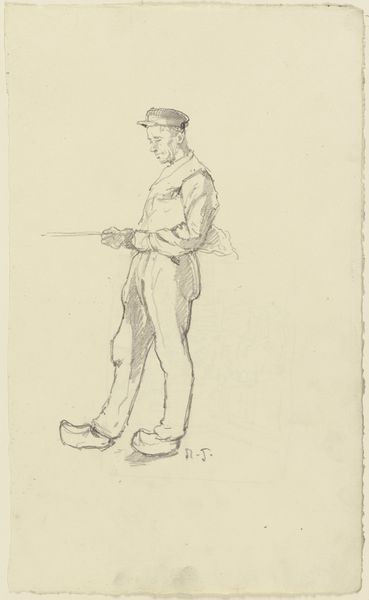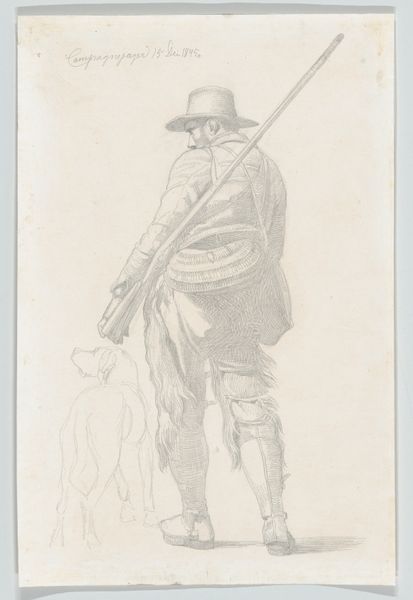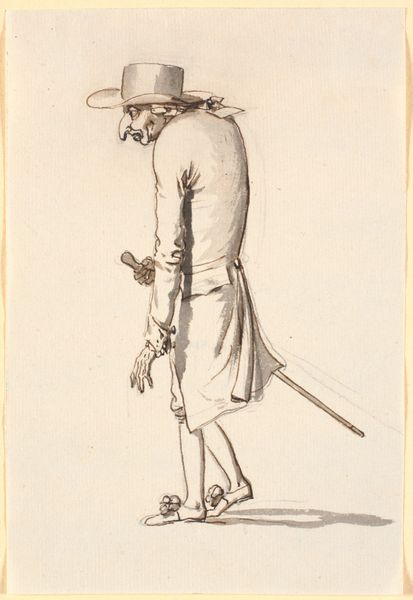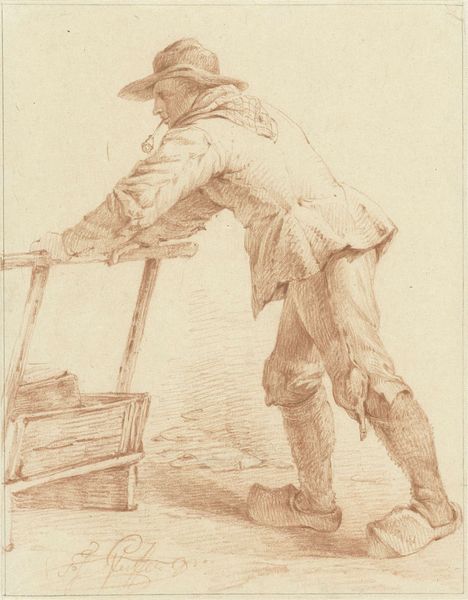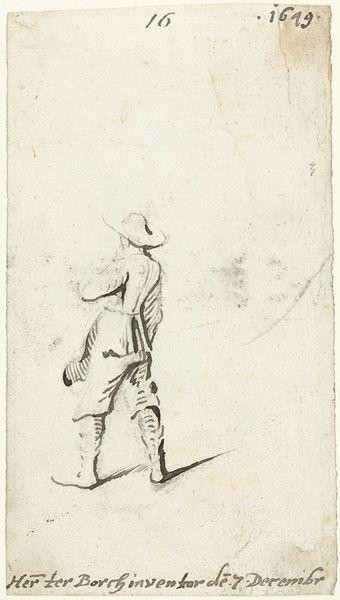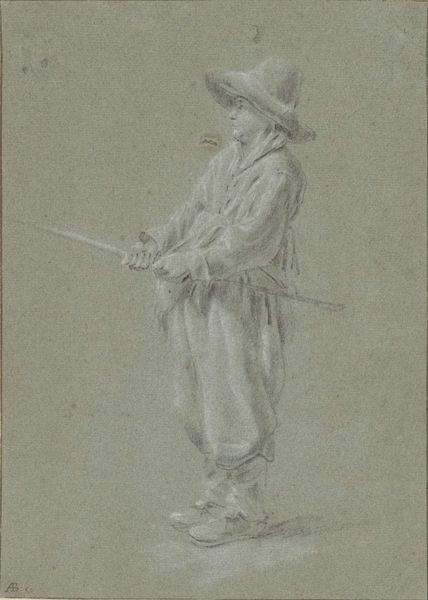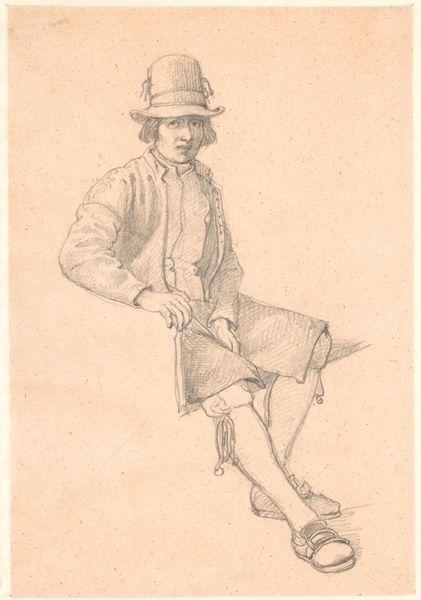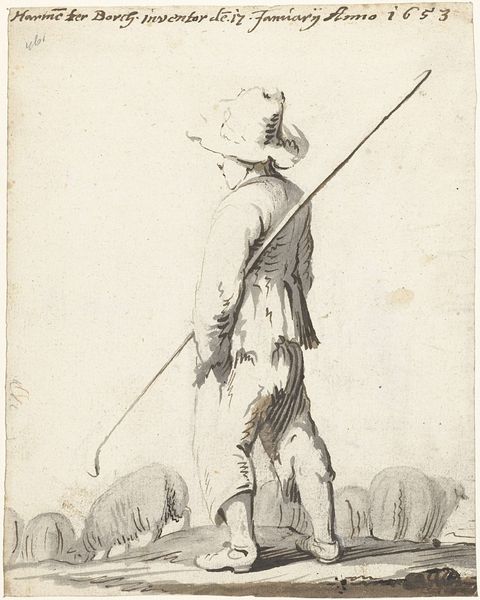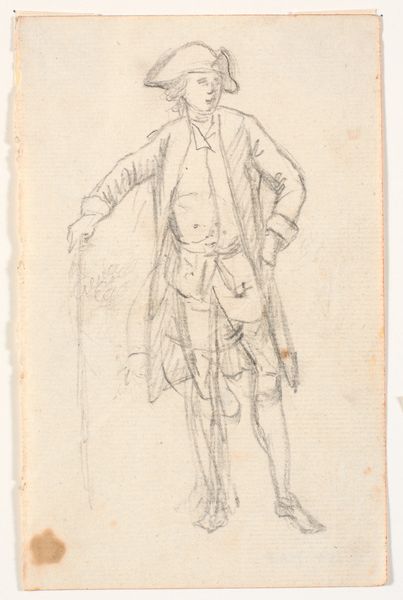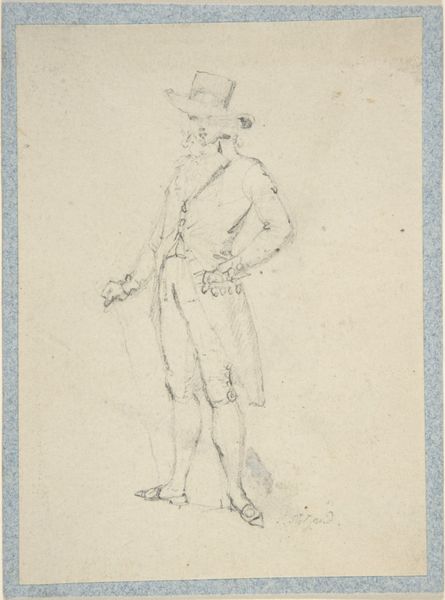
drawing, pencil
#
portrait
#
drawing
#
figuration
#
romanticism
#
pencil
#
genre-painting
#
academic-art
Dimensions: 388 mm (height) x 264 mm (width) (bladmaal)
Editor: Here we have Martinus Rørbye's "Italian Peasant," a pencil drawing from 1840. It strikes me as a study in contrasts—the simple lines of the peasant's form against the more elaborate details of his clothing and tool. What catches your eye in this work? Curator: Formally, the work exhibits a careful attention to line and the modulation of light and shadow, particularly in rendering the texture of the peasant's garments. Note the strategic use of hatching and cross-hatching. Observe how Rørbye creates a sense of volume and depth despite the limited tonal range. What does the relationship of figure to ground suggest to you? Editor: The figure dominates, definitely. Almost like a fashion plate in its focus, but the attire isn't elegant—more functional. I mean, is this supposed to evoke an idea about the common worker or rural life? Curator: Possibly, but first consider the drawing’s formal qualities: the composition, the use of line, the relationship between the depicted object and its representation. The peasant's clothing, though seemingly simple, presents a complex array of textures, each meticulously rendered by Rørbye's hand. Consider the formal rhythm achieved by the diagonal thrust of the farming tool held against the more vertical rendering of the figure. Is the work more representational or abstract in the formal sense? Editor: Representational. The lines aim to realistically depict the peasant. Still, I see how even a simple sketch carefully manipulates form to hold our attention. The layering and texture give depth to something that could've been very flat. Curator: Precisely. And the careful modulation of tone creates depth and three-dimensionality, highlighting Rørbye’s mastery of drawing techniques. Every aspect of the drawing contributes to the unified whole. What is communicated beyond its denotative value as a cultural object? Editor: I've started seeing how the artist communicates, not just what he represents, which opens a new path in interpreting the artwork beyond surface level. Curator: Indeed. That path allows a fresh consideration of structure that the visual forms communicate as aesthetic intention, transcending the boundaries of time.
Comments
No comments
Be the first to comment and join the conversation on the ultimate creative platform.
